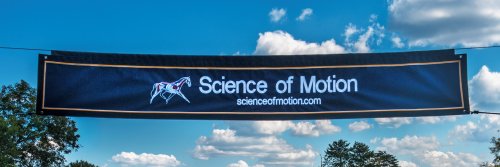International Conference 2020
2020 Science of Motion® International Conference.
October 3rd 2020

Science of Motion is Virtual for 2020. Includes 6 (est) or more hours of videos (with the zoom meeting as well) via Vimeo. And participation in a private forum for further discussion with the scheduled speakers. An email will be sent on October 3rd with a link and invitation for the forum. View the videos at your own pace anytime until November 3rd. Also Dr Uhl and Dr Osborn on October 4th 9Am EST will be doing a zoom conference and a powerpoint presentation wil be sent out a few days later. As well, a Zoom conference call with Dr Uhl and Dr Osborn for questions with you.
Purchase conference
$285. USD
An email will be sent with link to the Online conference on October 3rd 2020
and a invite to the private forum
Elizabeth Uhl DVM, PhD, DACVP and Michelle Osborn MS, PhD
1) Searching for Better Answers: Investigating the Root Causes of Chronic Lameness in Horses
We will review our investigations into navicular disease by: (1) re-conceptualizing the equine navicular apparatus as an enthesis organ in which mechanical forces are distributed throughout its structures; (2) providing evidence that failure of the navicular enthesis organ explains the lesions of navicular syndrome; (3) considering a focus on whole body posture/motion as the basis for the development of rehabilitative therapies.
The second part of this presentation will build on the whole body approach by considering how the body is structured and functions through tensegrity. We will use case examples of caudal cervical arthritis and chronic ligament damage to reconstruct body postures that would increase the mechanical forces in the damaged areas. Finally we will consider the role of physical intelligence in dictating how movements are performed. Physical intelligence is defined as how the brain works together with the body to engage with the world, but it is largely inaccessible to conscious introspection.
2) Changing Paradigms: Why is it so Difficult?
Promoting the role of whole body posture/movement in the pathogenesis of chronic equine lameness has been difficult, as there is a general resistance to the idea from many equine professionals. This resistance occurs in spite of the fact that the same approach is well established in human rehabilitative therapies and has led to major breakthroughs in the performance and prevention of injury in human athletes. This kind of resistance to ideas outside of an established knowledge base is not unusual, but why does it occur? To answer this question, we will lead a discussion of metacognition and thinking processes, especially those that seem to close the human mind to ideas that challenge the status quo.
Dr. Gian Pierro Brigati DVM
The talk will be on hoof's anatomy and physiology, deeper view of hoof suspensory apparatus (laminae) and cases
Jean Luc Cornille Half Pass, from the perspective of tensegrity and physical Intelligence.
The body and the brain help each other but the body functions at a level of sophistication more elaborate than previously believed. our ancestors were aware of. The brain needs to keep track of the entire body all at once. The equitation of the body parts, "the aids," has to evolve into a coordination of the whole physique.
The concept is presented with the dynamic study of half pass.
Patrick Fesquet The Macel saddle model, riding, design and construction.
Purchase online conference
$285. USD
An email will be sent with link to the Online conference on October 3rd 2020
and a invite to the private forum and a few days before a Zoom link for Dr Uhl and Dr Osborn lecture.


